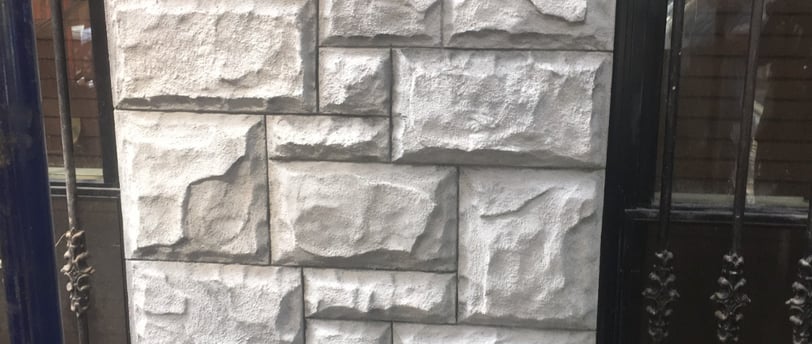Brick Pointing Basics: A Quick and Friendly Guide!
This friendly guide dives into the world of brick pointing, a crucial upkeep for your charming brick building. It breaks down techniques like tuckpointing, flush, rake, and weather-struck pointing, tailored to keep your structure sturdy and stylish. Enjoy the perks of enhanced durability, boosted energy efficiency, higher property value, and a healthier living space. Plus, it comes with handy tips on picking the right masonry pro to keep your brickwork in top-notch condition. Dive in to ensure your building stays as fabulous as ever!
Chat GPT
5/1/20243 min read


Hey there! If you own a brick building or simply love the charm of masonry, then you've probably heard about brick pointing—but what exactly is it? And why is it so important? In this friendly guide, we’ll walk you through the basics of brick pointing, its significance, and the different techniques that can ensure your building remains beautiful and sturdy.
Why Brick Pointing Matters
Brick pointing, often referred to as tuckpointing, involves repairing or replacing the mortar between bricks. This is more than just a cosmetic fix—it's crucial for maintaining the structural integrity of a building. Over time, weather and environmental conditions can wear down the mortar, leading to moisture infiltration, heat loss, and even structural damage. Regular maintenance through brick pointing not only keeps your building looking great but also prevents these issues, ensuring it stands strong for years to come.
Techniques of Brick Pointing
Brick pointing might sound straightforward, but it actually involves several techniques, each suited to different types of buildings and conditions. Here are a few common methods:
1. Tuckpointing: This is the most traditional form of brick pointing. It involves removing old mortar to a uniform depth and then filling it with new mortar. Tuckpointing is ideal for historical buildings as it helps preserve the original architecture while ensuring the structure remains weatherproof.
2. Flush Pointing: Flush pointing ensures that the new mortar is level with the bricks, creating a smooth, uniform surface. This method is less decorative than tuckpointing but is effective in sealing the brickwork from water and environmental damage.
3. Rake Pointing: In rake pointing, the mortar is removed and replaced so that it's set back slightly from the face of the bricks. This technique provides a shadow effect and is often used for aesthetic purposes on more modern buildings.
4. Weather Struck Pointing: This technique involves shaping the mortar so that it slopes outwards from the bottom of the joint to the top, directing water away from the brickwork. It’s particularly useful in areas with heavy rainfall as it enhances water shedding and protects the building’s structure.
The Benefits of Proper Brick Pointing
Brick pointing offers several benefits beyond just keeping your building upright. Here are some key advantages:
Enhanced Durability: Properly maintained mortar joints are crucial for the longevity of brick buildings. Good pointing protects against the elements, preventing bricks from loosening and structural supports from weakening.
Improved Energy Efficiency: Cracks and gaps in old mortar can lead to air leaks, which increase heating and cooling costs. By sealing these gaps, brick pointing can significantly improve a building’s energy efficiency.
Increased Property Value: A well-maintained building is not only safer; it also has a higher market value. Brick pointing enhances the curb appeal of your property, making it more attractive to potential buyers or renters.
Healthier Indoor Environment: Moisture and drafts that penetrate through weakened mortar can lead to mold and mildew growth inside buildings. By keeping the exterior mortar in good shape, you also protect the interior from potential health hazards.
Choosing the Right Contractor
Brick pointing is a skilled craft, and not all contractors are created equal. When choosing someone to undertake this important work, look for experienced professionals who specialize in masonry. Ask for references, check their previous work, and ensure they understand the specific needs of your building’s architectural style and structural requirements.
Wrapping It Up
Maintaining the brickwork of your building might seem like a daunting task, but understanding the importance and techniques of brick pointing can make it manageable. Regular and professional maintenance not only preserves the life of your building but also enhances its beauty and functionality. So, whether you’re looking to restore a historic gem or simply keep your modern masonry in top shape, proper brick pointing is a key step in caring for your property. Remember, your building is not just an asset; it's a part of the community and history, deserving of the best care you can provide!
